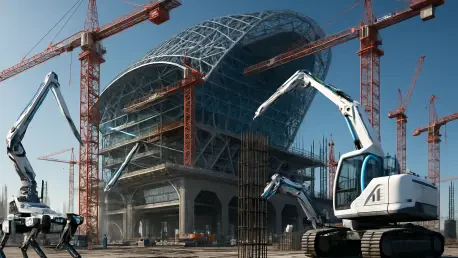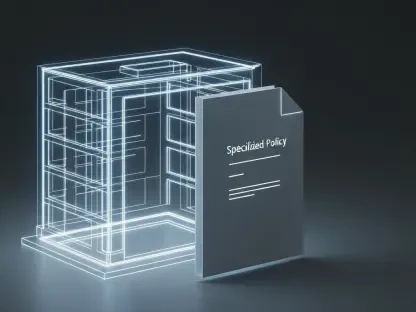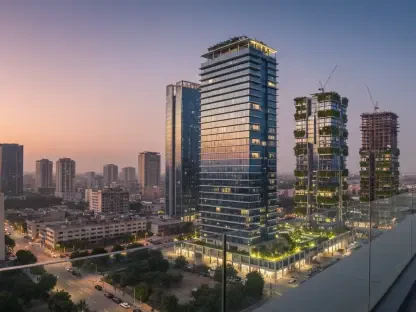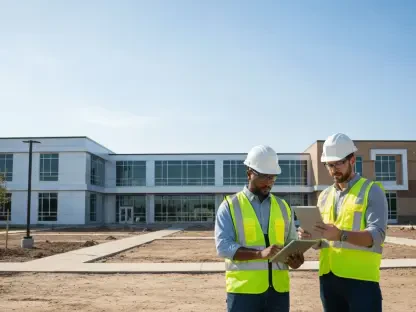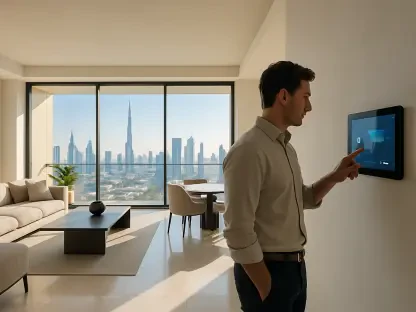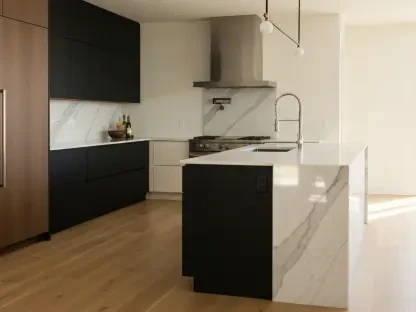I’m thrilled to sit down with Luca Calarailli, a seasoned expert in construction with a deep background in design and architecture. With years of experience in managing complex projects and a passion for integrating cutting-edge technology into the industry, Luca has become a go-to professional for high-tech fit-out and new build initiatives. Today, we’ll dive into his journey, exploring how he navigates the challenges of project management, fosters client relationships, and drives innovation in a fast-paced corporate environment. Our conversation touches on everything from leading multidisciplinary teams to mastering the full project lifecycle, offering insights for anyone looking to excel in this dynamic field.
How did you first get into project management, and what drew you to high-tech fit-out and new build projects in particular?
I’ve always been fascinated by how buildings come to life, from the initial sketches to the final brick. My career in project management started over a decade ago when I worked on a commercial redevelopment project that required both design finesse and strict timelines. That experience hooked me. What really drew me to high-tech fit-outs and new builds was the challenge of blending innovation with functionality—whether it’s integrating smart systems into a corporate office or constructing a cutting-edge facility from the ground up. These projects push boundaries, and I thrive on solving the unique puzzles they present.
Can you share a memorable project that tested your skills, and how you tackled the obstacles it threw at you?
One project that stands out was a high-tech office fit-out for a major corporate client a few years back. We faced tight deadlines and a scope that kept evolving due to the client’s need for last-minute tech upgrades. The biggest hurdle was coordinating with multiple vendors and ensuring the infrastructure could support the new systems without delaying the handover. I tackled it by setting up daily check-ins with the team, prioritizing critical tasks, and maintaining transparent communication with the client about trade-offs. In the end, we delivered on time, and the client was thrilled with the adaptability we showed. It taught me the value of flexibility and proactive problem-solving.
What’s your approach to building strong relationships with clients, especially when challenges arise during a project?
Building trust is at the core of any client relationship. I start by listening—really understanding their vision and priorities before offering solutions. When challenges come up, like budget overruns or delays, I’m upfront about the situation and present options rather than excuses. For instance, on a recent new build, we hit a snag with material shortages. I worked with the client to adjust timelines and sourced alternatives without compromising quality. Keeping them in the loop and showing that I’m invested in their success helps manage expectations and often strengthens the partnership.
How do you ensure a project stays on track in terms of scope, budget, and timeline throughout its lifecycle?
It all starts with a rock-solid plan. I define the scope early by working closely with stakeholders to nail down every detail, then build buffers into the budget and timeline for the unexpected. Regular progress reviews are key—I use tools to track milestones and flag risks before they become problems. On one fit-out project, we noticed costs creeping up due to design changes. I sat down with the team, reassessed priorities, and negotiated with suppliers to keep us within budget. It’s about constant monitoring and being ready to pivot while keeping the end goal in sight.
What strategies do you use to lead and coordinate multidisciplinary teams on complex projects?
With multidisciplinary teams, clarity and collaboration are everything. I make sure everyone knows their role and how it fits into the bigger picture by holding kick-off meetings to align on goals and using shared platforms for updates. If conflicts arise, I step in as a mediator to find common ground. On a recent new build, we had architects and engineers clashing over design feasibility. I facilitated a workshop where both sides could voice concerns and brainstorm solutions together. It not only resolved the issue but also built a stronger team dynamic.
How do you handle the pressure of tight deadlines while keeping your team motivated?
Tight deadlines are part of the game, and I’ve found that clear communication and a positive mindset go a long way. I break the project into smaller, achievable milestones so the team feels a sense of progress. I also make it a point to acknowledge their hard work—whether it’s a quick shout-out or grabbing coffee for everyone during a late night. During a particularly intense fit-out with a four-month timeline, I kept spirits up by celebrating small wins and being hands-on with problem-solving. It reminded the team we were in it together, and we crossed the finish line ahead of schedule.
Can you tell me about your experience with contract administration, particularly with complex agreements?
Contract administration has been a big part of my role for years. I’m well-versed in various forms, including JCT contracts, which often come up in commercial projects. My focus is on ensuring all parties understand their obligations and that risks are mitigated upfront. On one project, we had a dispute over scope creep that could’ve derailed the budget. I reviewed the contract, highlighted the agreed terms, and negotiated a fair amendment with the contractor. It’s about being detail-oriented and proactive to avoid costly misunderstandings down the line.
How do you balance the demands of hybrid working and regular travel for project sites?
Hybrid working and travel are just part of delivering projects across different locations, and I’ve adapted by staying organized and flexible. I plan my site visits to Cheshire and Manchester strategically, bundling meetings to maximize face-to-face time with teams and clients. Digital tools help me stay connected when I’m not on-site—whether it’s virtual walkthroughs or progress updates. Honestly, being on the ground regularly keeps me in tune with the project’s pulse, and I enjoy the variety it brings to my week.
What’s your forecast for the future of high-tech fit-out and new build projects in the corporate sector?
I see the future of high-tech fit-outs and new builds in the corporate sector leaning heavily into sustainability and smart technology. Companies are increasingly prioritizing energy-efficient designs and spaces that adapt to hybrid work models, which means integrating IoT systems and flexible layouts from the get-go. I also think we’ll see more emphasis on modular construction to speed up timelines without sacrificing quality. It’s an exciting time—the push for innovation will challenge us to rethink traditional methods and deliver spaces that are as future-proof as possible.
